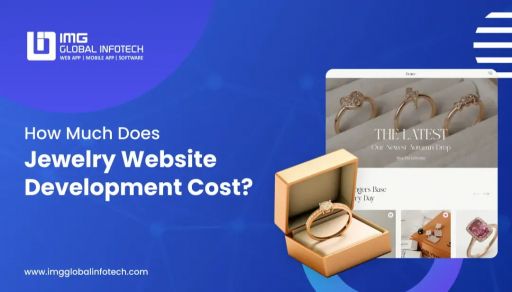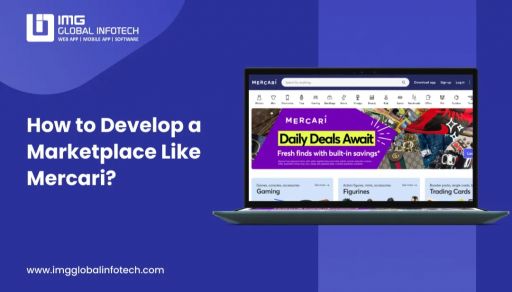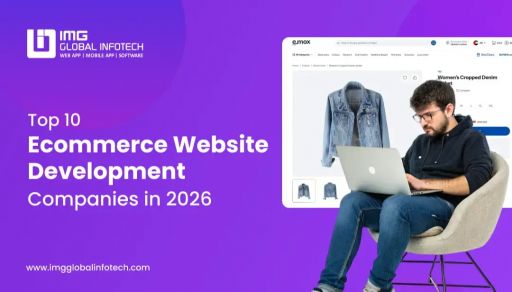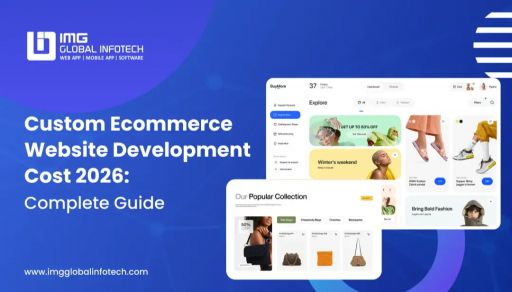An Ultimate Ecommerce App Development Guide
Lokesh Saini
Sep 12, 2025

In 2026, this e-commerce explosion is anything but fizzling. As millions of shoppers continue to flock to the internet every day, entrepreneurs around the globe are working hard to develop their e-commerce apps and for good reason. A well-designed mobile app ensures that your customers are more engaged and conversions are high, with more sales and trust for the brand. Whether you are introducing a new digital storefront or you manage a well-established business now, a solid e-commerce app is significant for staying relevant and competitive as well. But where do you start? The way is damned to be overwhelmed; you must select the most suitable features and tech stack, get in touch with the expert development company, and much more. This guide is for you, the entrepreneur, the visionary, ready to turn your big ideas into easy-to-use, powerful e-commerce apps.
E-commerce Market Stats
-
Market share is projected to reach $6.88 trillion in 2026, up from $6.09 trillion in 2024, marking an 8.4% annual growth rate.
-
E-commerce will account for 20.5% of global retail sales in 2026 and 22.5% by 2028.
-
Asia-Pacific leads with over 57% of global e-commerce revenue in 2023.
-
The market value is expected to reach $147.3 billion in 2024, growing at a CAGR of 18.7% through 2028.
-
Over 270 million Indians shopped online in 2024, making India the second-largest e-retail market by number of shoppers.
-
Unified Payments Interface (UPI) accounted for nearly 80% of digital payments in 2023, with transaction volumes reaching 12.2 billion in January 2024.
-
This sector, including players like Blinkit and Zepto, represented over two-thirds of all e-grocery orders in 2024, with a market size of $6–7 billion.
-
These regions contribute 60% of e-commerce business, driven by increased internet penetration and smartphone adoption.
-
The Indian e-commerce market is projected to reach INR 53.42 trillion ($650 billion) by 2029, growing at a CAGR of approximately 39.37% from 2024 to 2029.
Types Of E-commerce Businesses
If you want to develop an ecommerce fashion app like Zara or any other famous brand you must know that you must first have an idea about its types. Here is the list of types you must know about.
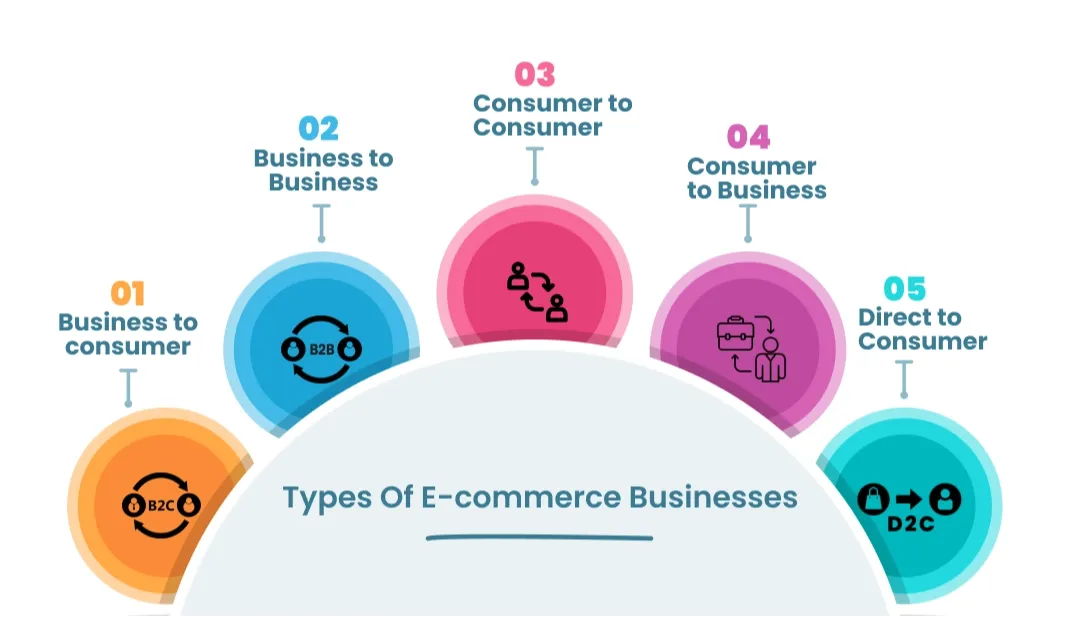
B2C (Business-to-Consumer)
Business-to-consumer (B2C) e-commerce relates to businesses marketing their goods (products or services) to end-users. It is the most common model and includes online retailers (Amazon) or clothing brands selling directly through their websites. B2C ecommerce development model is based on the customer experience, the number of products and services one offers, and the ease of transaction to achieve client engagement and loyalty.
B2B (Business-to-Business)
There’s also B2B e-commerce or transactions between businesses, whether it’s a manufacturer selling to a wholesaler or the latter selling to a retailer. The platforms typically process orders in mass quantities, repeat purchases and special pricing arrangements. There are some examples of such businesses, such as Alibaba or the sector supply portals. The emphasis of the model is on efficiency, tailor pricing and standardized purchase flow.
C2C (Consumer-to-Consumer)
C2C Ecommerce platforms allow people to trade products directly with each other. Players like eBay, Craigslist, and Facebook Marketplace fit this model. They offer a platform that allows buyers to list items and correspond directly. Rating mechanisms and trust and security is key to success.
C2B (Consumer-to-Business)
In a C2B model, individuals provide products and services to businesses. Examples could be freelancers working on platforms like Fiverr or photographers who license photos to companies. This model inverts the usual purchasing heuristics by letting consumers dictate terms and businesses discover new talent or content.
D2C (Direct-to-Consumer)
D2C e-commerce allows brands to sell directly to customers without intermediaries, often through their own online stores. d2c ecommerce app development model gives companies full control over branding, pricing, and customer data. Examples include Warby Parker and Glossier. D2C emphasizes personalization, strong customer relationships, and niche marketing strategies.
Also Read: Shein-Like Fashion Ecommerce App Development Cost In Dubai
Why Invest In E-commerce App Development?
Ecommerce app development is an investment that all businesses should consider taking seriously if they are seeking to diversify their offerings, position themselves to react to changing customer behavior, and remain a prominent competitor in the expanding digital landscape. Here are five reasons ecommerce development is an excellent investment for businesses:
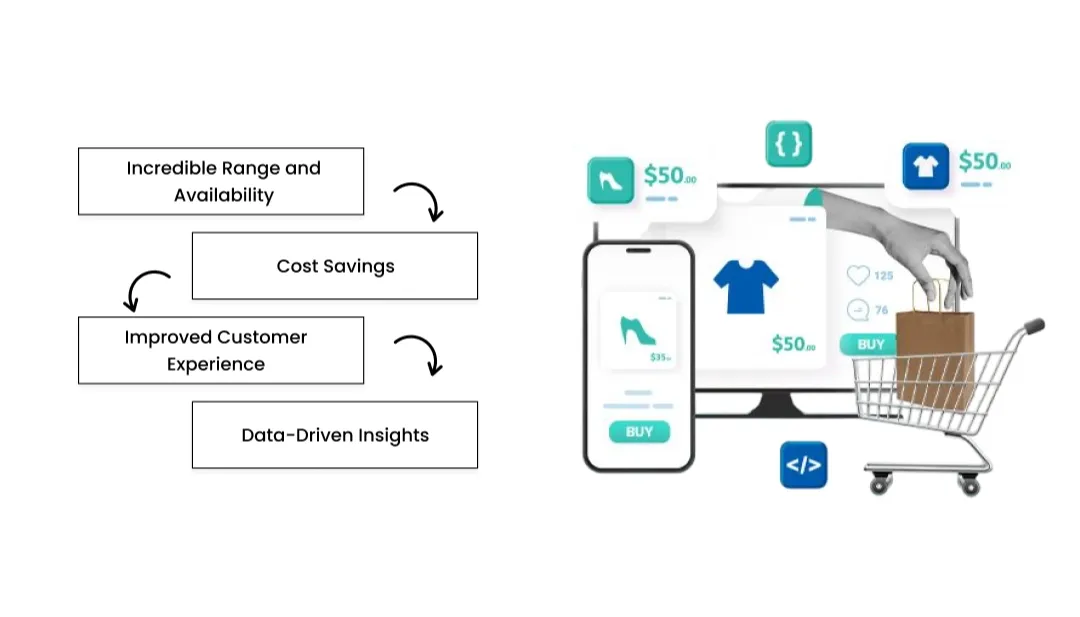
Incredible Range and Availability
A global ecommerce platform allows for unlimited customer availability. Unlike retail stores that have limitations around geographic location, size of store and market, online stores eliminate limitations as it relates to customers - anywhere in the world - and at any time. In short, the volume of opportunities for ecommerce sales is directly related to the ecommerce business situation.
Cost Savings
Ecommerce businesses will drastically reduce or eliminate expenditures associated with a traditional retail business (e.g. rent, utilities, human capital, etc.). In turn, ecommerce businesses may be able to dedicate their extra costs towards marketing, product development or customer service.
Improved Customer Experience
Ecommerce platforms more frequently provide a customized shopping experience using more optimized functionalities such as AI-generated product recommendations, optimized checkout experience and ease of use.
Data-Driven Insights
Ecommerce app development has the advantage of integrating analytics tools that provide data on customer behavior, sales patterns, and inventory. Businesses can leverage this data to make data-driven decisions, optimize marketing efforts, and define products related to demand.
Also Read: 10+ Ecommerce App Development Companies In USA
How To Build An E-commerce App?
The time has come for you to learn how to build an e-commerce mobile app. Building an e-commerce app is an investment and an experienced ecommerce app development company can make the process a lot easier. There are six basic stages of how to make a ecommerce app.
Ideation and Requirement Gathering
The ecommerce app development guide begins with your business goals, target audience, and market requirements. An experienced ecommerce website development company will collaborate with the client to help you clearly define your idea and requirements, identify core features such product catalogs, cart systems, and payment gateways, and whether you would like to develop for either iOS or Android, or both. This stage sets the stage for success when developing your app.
UI/UX Design
This is the second step in our ecommerce app development guide. Creating an intuitive and engaging user interface is important to win over customers and maintain their loyalty. The e-commerce mobile app development team will work together to create wireframes and prototypes that will help them visualize user journeys. All aspects of the app's aesthetic and navigation will be thoughtfully considered to ensure a seamless shopping experience across all devices, while optimizing the responsiveness of the app.
Backend Development
At this stage of the ecommerce app development guide, the focus is on just building the app's core engine; server-side logic, databases, APIs, and admin panel functions. A well-built back-end allows for real-time updates of inventory, stores data securely, and provides good integrations with third parties like payment gateways, shipping APIs, and CRMs.
Frontend Development
Next, the developers will build the client-side of the app using appropriate technologies according to the platform you selected (e.g., React Native, Flutter, Swift). Your hired ecommerce app developer will be working on the front end and communicating with the back end, pulling data from the back end and displaying it through structured layouts according to the app's Design.
Testing and Quality Assurance
We are so close to the final stage of the ecommerce website development guide.
Pre-launch, the app is thoroughly tested—functionality, usability, performance, and security are all confirmed. The QA engineers find the bugs, and log an adherence to industry standards. This phase decreases post launch issues, and improves user satisfaction.
Deployment and Maintenance
Last step of the e-commerce website development guide, once approved, your app gets deployed to app stores. A good mobile app development company can also offer post launch support, take performance measures, fix issues, and push updates. They can also help you scale your b2b e-commerce development with newfound features as your business grows.
How Much Does It Cost to Build Ecommerce Mobile App?
The e-commerce app development cost can range for $15,000-$49,000+, Depending on the overall complexity and features expected, and the area in which your company is in. Here are eight key aspects affecting the development cost, with each aspect explained, then followed by a cost table for reference.
1. Platform (iOS, Android, or Both)
Developing only for Android or iOS has an effect on eCommerce app development cost compared to building for both platforms. Cross-platform app development frameworks like Flutter can help reduce development costs, but there may be some loss on performance or customization.
2. UI/UX Design
A simple, basic design with off-the-shelf templates won't break the bank, however if you want custom UI/UX with animations, micro-interactions, responsive design, and flow for the best user experience with your eCommerce app development guide; all of these features will cost you substantially more in design hours.
3. Number of Features
When developing an eCommerce app, whatever features you want to include (you may be considering wish lists, bots, loyalty programs) add some difficulty and certainly development time to your project. An eCommerce app with minimal shopping features to allow for a purchase, would be at the lower end of the price, while an app with rich interactive features that require a lot of backend work, and API integration, will have the highest price tag.
4. Backend Structure
High-end backend structure such as; hosting, a website to manage orders, managing users, an inventory database, and access to analytics, all contribute.
Cloud-based, scalable backends with strong security features can drive development and maintenance costs up but provide long-term stability.
5. Third-party Integrations
Integrating your ecommerce app with payment gateways, shipping APIs, CRM, or ERP can be super convenient, but these integrations can take time to set up and work through bugs and glitches before they go live, which can add to the total e-commerce mobile app development cost.
6. Development Team is Located
The cost for hiring ecommerce developers is one more of the driving factors in calculating the development cost. Developers in North America or Western Europe will bill $80-$^200/hour, while the whole development team in Asia (India, Philippines) will cost $20-$50/hour. Where your developers are located will drastically affect the cost for the project to develop an e-commerce app.
Essential Features Of E-commerce Apps
To truly finish your how to create an ecommerce app, it just has incredible functions. The functions, which must have to be relevant in 2026. So, everybody here has this amazing summary of features for e-commerce apps like Home Depot.
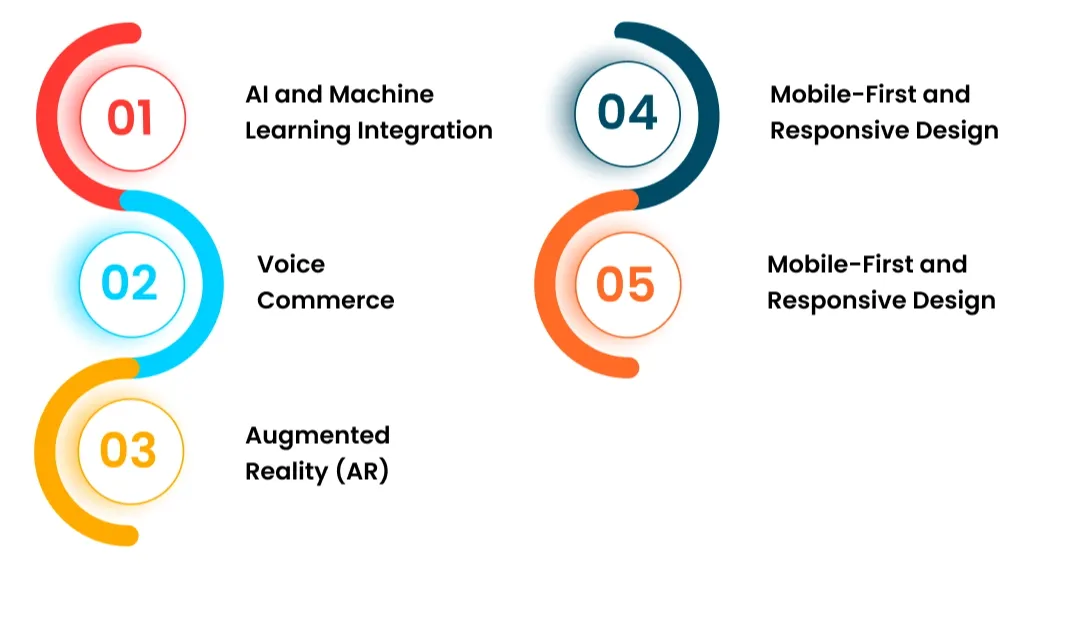
User Registration & Login
Customers can either register their account or securely login, with their e-mail, phone number, or social media. This enables customers to have personalized experiences, as well as faster future checkouts.
Product Search & Filters
Allows users to effectively and quickly locate items using keywords, categories or filters based on price or brand to better the user's experience and shopping time.
Product Listing with Product Details
This e-commerce app type Displays product images, specifications, price, reviews, and availability for users to rely on and not improvise a purchase decision using the exact required info for purchase on hand.
Shopping Cart
Take a collection of products selected for the purchase into a virtual basket. This allows the user to check, edit and delete products selected before completing the purchase process.
Secure Payment Gateway
Integrating payment options such as cards, UPI, wallets, and net banking will add a layer of security and enable safe payment transactions. Payment is secure due to encryption, thus builds trust and encourages the purchase.
Order Tracking
Users tracking order is crucial for transparency and trust. Users can track orders in real time from when the order has been confirmed, dispatched until final delivery to customers.
Push Notifications
Allowing push notifications to notify customers about discounts, new arrivals, success of order update/service, updates and personalized offers is great for increasing user engagement and retention and vital in creating familiarity through evolving e-commerce trends.
Wishlist Functionality
Enabling the customers to save products of interest for future purchase allows user convenience and ultimately increases the chances of converting the product to purchase down the line.
Ratings & Reviews
Gives users an opportunity to motivate others and assist fellow buyers by rating and reviewing products based on their experiences.
Personalised Recommendations
Uses browsing and buying history to make recommendations, which results in more sales and an overall better experience and satisfaction.
Multi-language and currency support
Helps international customers by providing language and currency options, ensuring greater accessibility of the shopping experience and inclusiveness for international buyers.
Also Read: Build A D2C Ecommerce App Like Nike, Warby Parker & Allbirds [Updated]
Current Trends Of E-commerce App Development
The e-commerce landscape is evolving rapidly, driven by changing consumer expectations and technological advancements. Businesses investing in ecommerce app development guides must align with the latest trends to stay competitive and deliver exceptional user experiences. Here are the key trends shaping the future of e-commerce apps:
AI and Machine Learning Integration
AI in ecommerce shaping the future with features like personalized product recommendations, chatbots, and predictive search enhance customer engagement and streamline shopping. These technologies allow businesses to offer smarter, data-driven experiences.
Voice Commerce
With the rising use of smart assistants like Alexa and Google Assistant, voice-enabled shopping is becoming more common. E-commerce apps now integrate voice search to offer a hands-free, convenient shopping experience.
Augmented Reality (AR)
AR enables users to visualize products in real-world environments, such as trying on clothes or seeing furniture in their homes. This reduces return rates and boosts buyer confidence.
Mobile-First and Responsive Design
With mobile commerce dominating online sales, e-commerce apps must be optimized for speed, performance, and responsiveness across various screen sizes.
Social Commerce Integration
Platforms like Instagram, Facebook, and TikTok are becoming integral to e-commerce. Apps now offer features that allow users to shop directly from social media, enhancing product discovery and purchase convenience.
How Can IMG Global Infotech Help You Launch Your E-commerce App?
Now that you know how to develop an e-commerce app, you should know how IMG Global Infotech can help you. We specialize in crafting custom e-commerce apps tailored to your business needs. From intuitive UI/UX design to secure payment gateway integration, we provide end-to-end development solutions. Our expert team ensures your app is scalable, user-friendly, and performance-optimized. We also offer post-launch support, SEO, and digital marketing to boost visibility and sales. Whether a startup or an established brand, IMG Global Infotech empowers you with the technology and strategy needed to succeed in the competitive e-commerce landscape. Launch your app confidently with our expert guidance and innovation.
Lokesh Kumar is the Digital Marketing Manager & SEO Content Strategist at IMG Global Infotech, a top-rated Web & Mobile App Development Company. With extensive experience in digital marketing, SEO, and content strategy, he specializes in boosting online visibility and driving organic growth for startups, SMEs, and global brands. Lokesh is passionate about creating SEO-friendly, user-centric content that not only ranks but also converts. His deep understanding of digital trends and search algorithms helps businesses thrive in a competitive online space.


